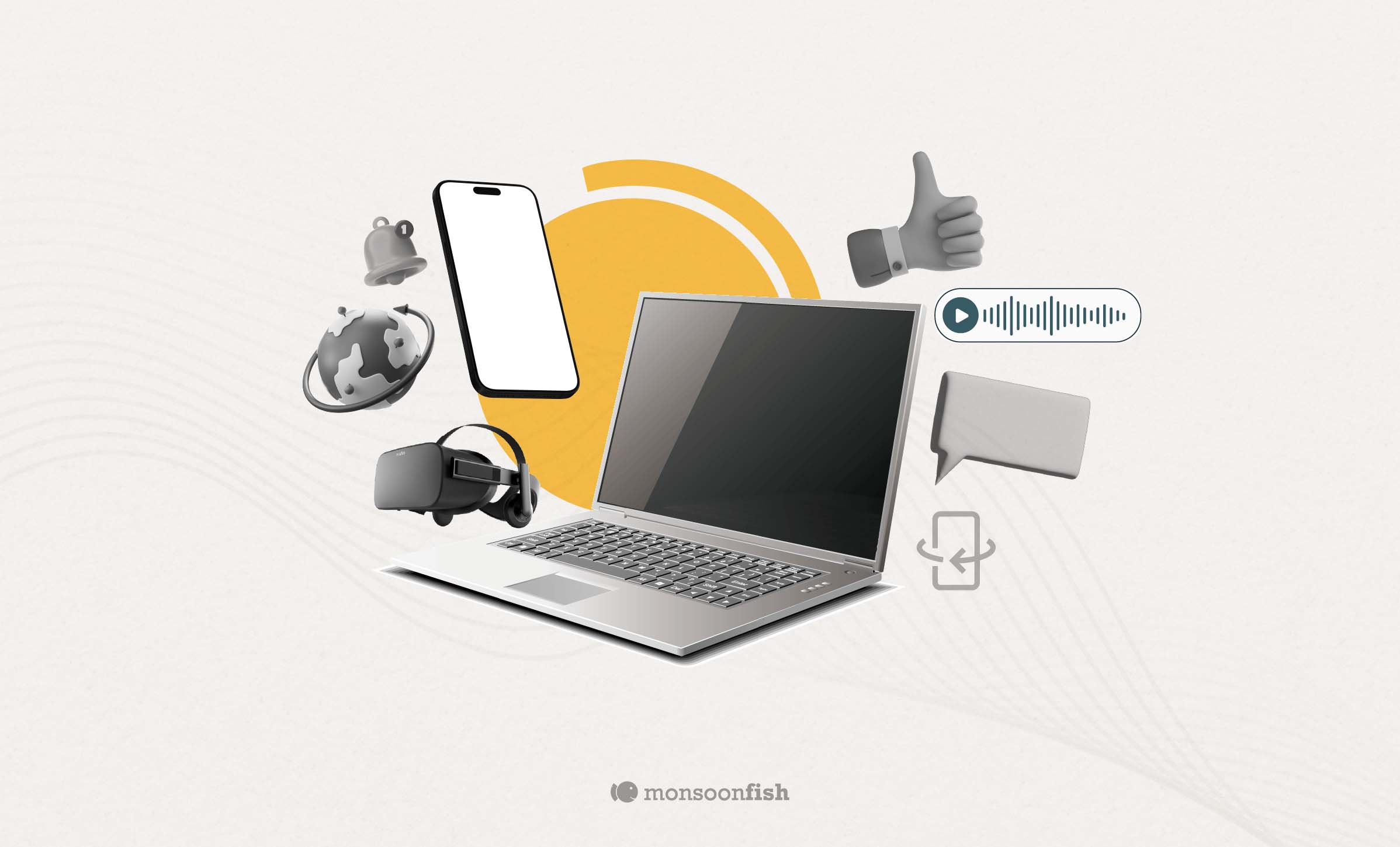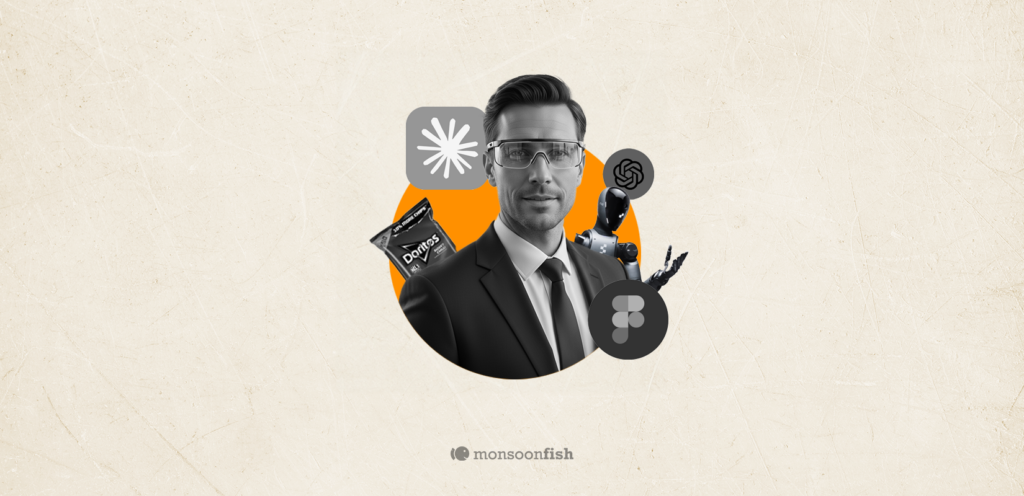Are You Missing Out on These Game-Changing Ecommerce UX Trends for Your Website in 2024?
From AI-driven personalization that feels almost magical to seamless, immersive experiences that captivate from the first click, these trends are setting new benchmarks in digital retail. Ready to elevate your online store to new heights? Discover how the latest e-commerce UX innovations can turn your platform into a magnet for customers and a leader in the digital marketplace.

88% of online consumers are less likely to return to a site after a bad user experience? That’s the transformative power of cutting-edge e-commerce UX—turning your website from a mere storefront into a dynamic, customer-centric powerhouse. As we step into 2024, the latest UX trends are poised to revolutionize online shopping, making your site more engaging, intuitive, and irresistible to visitors.
10 Ecommerce UX Trends You Must Know To Transform Your Website
The e-commerce landscape is continuously evolving, significantly impacting user experience design. Staying updated with current UX trends is crucial for businesses to remain competitive in the market. This section introduces the innovative trends that are currently reshaping e-commerce web design, geared towards enhancing user engagement, satisfaction, and conversion rates. Cutting-edge technologies play a pivotal role in transforming e-commerce experiences, making it imperative to adopt these advancements.
1. Personalized Shopping Journeys
Utilizing AI to create tailored shopping experiences is essential for e-commerce platforms. Dynamic product recommendations and personalized landing pages significantly enhance user engagement and drive sales. According to Epsilon, 80% of consumers are more likely to purchase from a brand that provides personalized experiences.
Example: Amazon uses AI algorithms to recommend products based on browsing history and past purchases, while Netflix offers personalized content suggestions based on viewing history.
2. Augmented Reality (AR) for Interactive Shopping
AR offers immense benefits for visualizing products in a real-world context. Virtual try-ons and 3D product modeling allow customers to interact with products in new ways. Gartner predicts that by 2022, 100 million consumers will shop using AR.
Example: IKEA Place allows users to visualize furniture in their homes using AR, and Sephora Virtual Artist lets customers try on makeup virtually.
3. Voice Commerce for a Seamless Shopping Experience
The role of voice search and voice commands in e-commerce is on the rise. Integrating voice assistants provides a smoother, more accessible user journey. OC&C Strategy Consultants projected that voice commerce will reach $40 billion in the USA by 2022.
Example: Amazon Alexa enables users to order products using voice commands, and Google Assistant facilitates voice-activated shopping and searches.
4. Optimized Checkouts for Efficient Transactions
Streamlining checkout processes is vital to reducing cart abandonment rates. Features like one-click checkout, auto-fill forms, and multiple payment options make transactions quicker and more efficient.
Example: Amazon’s One-Click Checkout simplifies purchasing with a single click, and Shopify offers various payment options and a streamlined checkout process.
5. Mobile-First Design for On-the-Go Shopping
With the rise of mobile shopping, optimizing for mobile devices is crucial. Responsive design, fast loading times, and user-friendly navigation are key components. Google reports that 53% of mobile users abandon sites that take longer than three seconds to load.
Example: ASOS features a mobile-friendly design with quick load times and easy navigation, while Zara optimizes the mobile experience with a responsive design and user-friendly interface.
6. Clean and Minimalist Aesthetics
Simplifying design enhances user focus on products and improves overall user experience. Clean layouts, ample white space, and high-quality product images are crucial elements. The Interaction Design Foundation shows that minimalist design reduces cognitive load and improves user satisfaction.
Example: Apple is known for its clean, minimalist design emphasizing product visuals, and Everlane utilizes white space and high-quality images to highlight products.
7. Social Commerce Integration
Leveraging social media platforms for e-commerce drives significant engagement and sales. Shoppable posts, social proof, and influencer partnerships are effective integration methods. BigCommerce found that 30% of online shoppers are likely to buy from a social media network like Facebook, Pinterest, Instagram, or Snapchat.
Example: Instagram Shopping allows users to purchase products directly from posts and stories, and Pinterest Buyable Pins enable users to buy products directly from pins.
8. Inclusive Design for Accessibility
Ensuring website accessibility broadens your customer base. Features such as screen reader compatibility, keyboard navigation, and alt text for images are essential. The World Health Organization estimates that 15% of the world’s population lives with some form of disability, highlighting the importance of accessibility.
Example: Microsoft incorporates inclusive design principles across its platforms, and the BBC ensures its website is accessible with features like keyboard navigation and screen reader support.
9. AI-driven UX
Enhancing interactions and personalizing user journeys with AI greatly improves the user experience. Chatbots and AI-powered product recommendations are prime examples. According to HubSpot, 47% of consumers are open to purchasing items from a chatbot.
Example: Shopify uses chatbots to assist with customer service and product recommendations, while H&M employs AI to suggest outfit combinations based on user preferences.
10. Engaging Visuals with Interactive Elements
Interactive elements on product pages can significantly boost user engagement. Features like 360-degree views, zoomable images, and video demonstrations allow users to interact with products more dynamically. Wyzowl shows that 85% of consumers are more likely to buy a product after watching a video.
Example: Nike uses 360-degree views and interactive elements on product pages, and Wayfair incorporates zoomable images and AR features for furniture shopping.
11. Ethical Design with Sustainable Practices
Promoting eco-friendly and ethical design practices attracts conscientious consumers. Sustainable product recommendations and transparency in sourcing are examples of ethical design. IBM found that 70% of consumers in the U.S. and Canada think it is important that a brand is sustainable or eco-friendly.
Example: Patagonia emphasizes sustainable practices and transparency in sourcing, and Allbirds uses eco-friendly materials and highlights sustainability in its design.
Staying ahead of the curve with the latest ecommerce UX trends is vital for maintaining a competitive edge in online retail. By adopting these trends, you can enhance user satisfaction, boost conversions, and foster long-term loyalty. Embrace these insights to transform your e-commerce website into a user-friendly, future-ready platform.
Ecommerce Giants Who Have Incorporated These Trends
Choosing the right e-commerce platform is crucial for building a successful online store. Here are three popular platforms, each with unique features and benefits, along with examples of successful stores using them.
Shopify
Shopify is a leading e-commerce platform known for its ease of use and comprehensive set of tools. It offers a user-friendly interface, customizable themes, integrated payment processing, and an app store with thousands of extensions. Shopify ensures mobile responsiveness and provides 24/7 customer support. Successful Shopify stores include Gymshark, Allbirds, and Kylie Cosmetics.
WooCommerce
WooCommerce is a flexible, open-source ecommerce plugin for WordPress, ideal for those familiar with the platform. It offers extensive customization, seamless WordPress integration, SEO capabilities, and a vast array of plugins. WooCommerce is scalable and supported by a strong community. Successful WooCommerce stores include Porter and York, Root Science, and The Good Batch.
Adobe Commerce [Magento]
Adobe Commerce is a powerful, open-source e-commerce platform designed for scalability and flexibility, capable of handling large catalogs and high traffic. It offers advanced customization, multi-store management, built-in SEO tools, and advanced security features. Adobe Commerce is available in both community and enterprise editions. Successful Magento stores include Nike, Ford, and Coca-Cola.
Choosing the right e-commerce platform depends on your specific business needs, technical expertise, and growth plans. Each of these platforms offers unique advantages that can help you create a successful online store.
Transform Your Digital Presence: Find the Perfect UI/UX Design Partner
Choosing the right design for your e-commerce website is crucial for business success. Partnering with the right UI/UX design company ensures a visually appealing, user-friendly, and effective online experience.
Key Considerations for Selection
When selecting an e-commerce design, align it with your brand identity and target audience. Your website should reflect your brand’s personality and offer intuitive navigation, fast loading times, and seamless interactions to enhance user experience. Effective design reduces bounce rates and boosts conversions by simplifying processes like checkout and product searches.
Evaluating Agency Expertise
Choose a design agency with a strong portfolio and positive client testimonials. Assess their experience in UX and UI design, how they incorporate client feedback, and their post-launch support. Diverse project examples and proven success in e-commerce are crucial indicators of their capability.
Customization and Scalability
Your platform should offer tailored solutions and be scalable to accommodate business growth. Customization enables unique shopping experiences, while scalability ensures your site handles increased traffic and additional features seamlessly. Shopify, WooCommerce, and Magento provide scalable options to grow with your business.
Your UX Design Partner in E-commerce
At Monsoonfish, we create dynamic websites that seamlessly combine stunning visuals with intuitive functionality. Our expertise turns your digital store into a captivating online destination, enhancing your brand’s presence and making shopping a delight. Whether you’re in retail or real estate, our tailored solutions ensure your site not only looks great but also delivers a flawless user journey.
With our team guiding you through every step, from concept to launch, you can expect a smooth process and impressive results. Let’s work together to elevate your e-commerce experience—contact Monsoonfish today and see how we can make your website shine.





